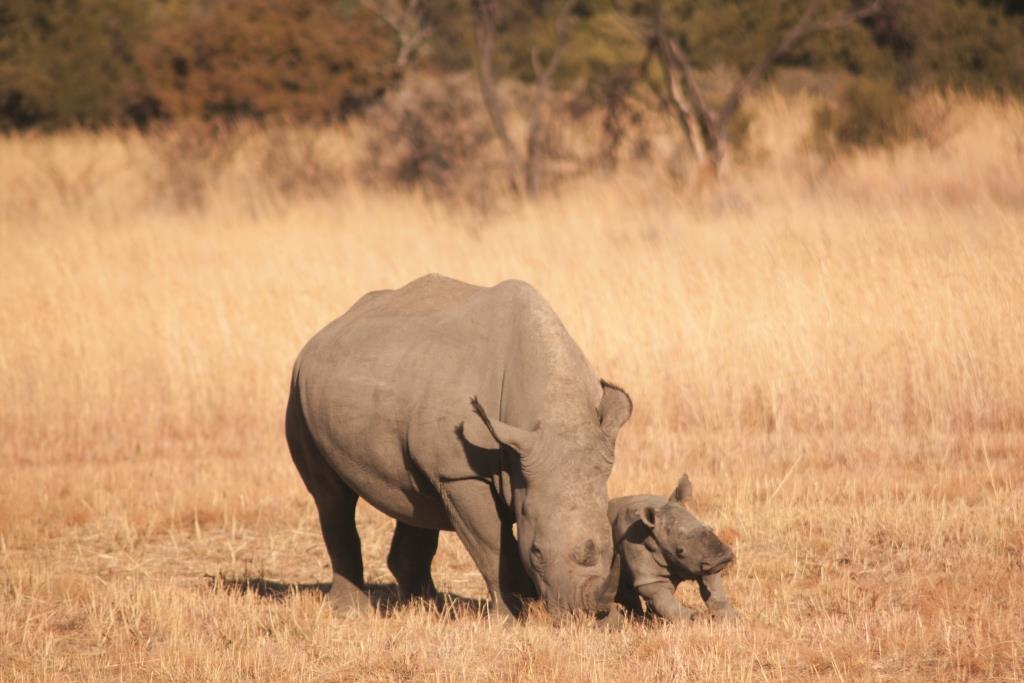Diplomatic channels between South Africa and Mozambique have come alive with activity over the vexed question of rhino poaching. The poachers use Mozambique as a springboard for their deadly sorties across the border into the Kruger National Park. South Africa’s flagship reserve, with an estimated 12,000 rhinos, is one of the world’s great sanctuaries for the endangered species.
High-level meetings are scheduled between the conservation authorities of the two countries, to inspect conditions along the boundary where the incursions happen. This is a marked difference from the arms-length exchanges, since the outbreak of poaching three years ago.
Mozambique and Vietnam—the biggest suppliers, to Asia, of the highly prized rhino-horn powder—received stern criticism at the March meeting of CITES (Convention on International Trade in Endangered Species), in Bangkok, Thailand. The South African delegation pleaded for international assistance, in a motion adopted by the global assembly of conservationists. CITES asked Mozambique to explain its efforts to curb the poaching. It instructed the country to tighten its anti-poaching laws and to step up its enforcement against the poachers and smugglers.
The urgent need for closer cooperation between the countries was noted in a report by Mavuso Msimang, the rhinoceros conservation issue manager of South Africa’s Department of Environmental Affairs. The brief is to solicit the widest possible range of views on how to conserve and manage the endangered species.
In 1996, Msimang, a notable anti-apartheid campaigner, became the first black chief executive of South African National Parks (SANParks), which is a custodian of the country’s national reserves. He became known as ‘Mr Fix-it’ for the roles he played in diverse areas of government after he left SANParks.
Msimang canvassed opinions of everybody connected to rhinos and their conservation. The report he handed over, late last year, to the department’s minister, Edna Molewa, had, inexplicably, not been made public by the time of the CITES meeting, though parts of it had been disclosed in increments.
He proposes the need for tougher and better coordinated security action between government agencies, ranging from more highly trained and well-equipped game rangers to the armed forces and even SARS (South African Revenue Service). His most contentious recommendation was that legal trade in rhino be allowed on a well-regulated basis, as a way of undercutting the lucrative black market.
He says that there is no silver bullet. The antidote to poaching needs to consist of a wide-ranging set of measures. One of these would have to be engagement with Mozambique over poaching incursions by way of the Great Limpopo Transfrontier Park, which the two countries and Zimbabwe established by treaty in 2003. The transfrontier agreements also need to be upgraded to provide for anti-poaching operations.
The crisis has shattered the dream, which was born in the era of South Africa’s Nelson Mandela and Mozambique’s Joaquim Chissano. It was a pact of supreme trust in which their two countries agreed to open their adjoining national parks, across national boundaries, to allow the animals wider roaming areas and to promote tourism. The arrangement was talked of as the world’s biggest animal kingdom and a jewel for global tourism.
Then the rhino poachers struck. In 2008, they killed what was then considered a worrisome 36 animals in the Kruger. Last year, the tally for the park stood at 425 of the 668 killed throughout the country. Within the first four months of this year, the national toll had exceeded 220.
Kruger’s rangers have received combat training and the police and army have been called in. Spotter planes have come into use, as have helicopters for rapid response. More and more, the fire-fights leave corpses behind. Within a short few years, this peace park, as transfrontier parks are called, has turned into a war zone.
David Mabunda, SANParks CEO, noted that 90% of the poachers come from Mozambique and that they were well-armed, with apparent military training.
“Many go back in body bags. Others get arrested. But they just keep coming,” he says.
South African public sentiment has started turning against the transfrontier scheme, especially as it involved dropping the old high-security fence that, during the border-war years, shielded the Kruger from Mozambique.
“There will be no other way [than putting up the fence] if the relentless incursions of poachers from Mozambique continue,” says Mabunda.
The fears for the scheme were evident from Werner Myburgh—CEO of the Peace Parks Foundation, that Afrikaner industrialist and conservationist Anton Rupert set up in 1997, with Mandela and Prince Bernhard of the Netherlands as its patrons.
“It would spell the end of the scheme,” he says.
Big donors, among them the German and French governments, would lose faith and funding, for the Mozambican part of the project in particular, would dry up. Around 6,000 people from Mozambique’s adjacent Limpopo Park, a million hectare tract of land that the Chissano government turned into a reserve for the specific purpose of the transfrontier project, would have to be relocated. Last year, these villagers agreed, after years of excruciating negotiations, to move to host villages outside the park. This would serve anti-poaching operations by making it impossible for the poachers to use the villages as hiding places.
The fear is that reconstruction of the fence would create the impression that the reserve scheme is collapsing and that this would not only jeopardize the translocation, but cause more people to move into the park. This could worsen the poaching problem rather than resolve it.
Myburgh insists that it is, therefore, for the sake of the rhinos that the fence should stay down and that the transfrontier scheme should be pursued with greater vigor. The treaty provides for a joint security committee which, if functioning properly, should serve as a perfect agency for sharing information and running joint anti-poaching operations.
